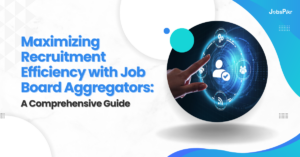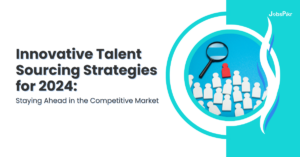Introduction
In today’s dynamic world, technology and data-driven insights are easily accessible. Companies are constantly looking for ways to help them maintain a competitive edge and create a loyal customer base. One powerful process at their disposal is data-driven global labor market research. This tool is equipped with the ability to provide businesses with insights that can lead to smart talent management decisions. This article explores how having data-driven market research helps you gain a competitive edge in the rapidly changing business environment. However, before heading right into the details, let’s start with the basics.
Data-Driven Global Labor Market Research: A Brief
Statistically speaking, the Indian data analytics industry is estimated to reach $118.7 billion by the year 2026. Using this technology of data analytics, businesses can carry out data-driven global market research, which entails understanding and analyzing the patterns and trends in the labor market.
The process of carrying out market research is based on large amounts of data that are gathered from different sources like employers and recruitment agencies. The aim of market research with data is to provide a comprehensive understanding of the labor market, including job openings, skills in demand, wages, and employment trends. This information can be used by policymakers, businesses, and job seekers to make informed decisions about education and training, workforce development, and career paths.
Global labor market research involves the use of advanced data analytics and machine learning techniques to analyze and interpret a huge amount of job data. Overall, data-driven market research provides a powerful tool for understanding the labor market and developing strategies to improve workforce outcomes.
The Ultimate Tool for Gaining a Competitive Edge
Identification of Talent Trends:
Incorporating data-driven global labor market research helps companies in a number of ways. One such way is that it helps in identifying talent trends in specific regions and industries. This can further assist them in developing hiring strategies that are in alignment with the market demand and skills.
Assessing Workforce Diversity:
It is necessary for every company to assess their internal operations, and with data-driven market research, they can identify areas of improvement. Furthermore, they can assess workforce diversity, especially for companies that operate in multiple regions, and make sure that their workforce depicts diversity.
Understanding Skill Gaps:
One of the main obstacles every company faces during hiring is skill gaps. It makes it difficult for employers to find the right talent and for individual to find the right job profile. Data-driven research can help companies understand where there are skills gaps in the labor market. This can help companies develop targeted employee training programs and improve their overall workforce development strategy.
Employee Retention:
When companies will have a more in-depth insight into the market and its trends, they can easily improve employee retention. It is possible for companies to identify factors contributing to employee turnover through data-driven research. It is important for organizations to understand why employees leave in order to develop strategies to improve retention rates and keep top talent on board.
Prediction of Future Market Trends:
In order to gain a competitive advantage, it is highly necessary to stay on top of the market trends. With data-driven research, one can predict the market trends of the future by analyzing current and historical trends. This can help them in preparing for the future and gain a competitive edge.
Evaluating Employer Branding:
By evaluating employer branding using a data-driven approach to market research, companies can attract top talent by portraying their culture, benefits, and values. This can help them identify areas with scope for improvement and take informed actions for the same.
Monitoring Labor Market Regulations:
The labor market regulations are different for every region. To avoid any legal issues or costly fines, it is necessary to stay on top of these regulations. With the incorporation of data-driven market research, you can keep your business operations in alignment with labor market regulations.
Benchmark Salaries:
To hire the best talent, it is advised to analyze what your competitors are doing. When it comes to hiring, designing the salary package is a crucial task. This is where the data-driven approach to labor market research comes in handy. It allows you to evaluate your competitors and benchmark the compensation packages that can help attract top talent.
Talent Pipeline:
By analyzing demographic and employment data, companies can identify potential talent pools that they can tap into for future hires. This can help them build talent pipelines and stay ahead of their competitors.
Analyzing Talent Migration Patterns:
By analyzing talent insights and migration patterns across different regions and industries using data-driven labor market research, companies can identify areas with high demand for certain skills. This can help them adjust their hiring strategy to attract top talent from other regions or countries.
When every aspect of business operations changes, hiring managers, employers, and even the employees need to get equipped with the paradigm shift. Now more than ever, a skill-based approach is followed when it comes to hiring, and with data-driven market research, one can efficiently find the right talent for the right position.
Conclusion
With the ability to disrupt the hiring process, data analytics and technological advancements hold the power to provide strong insights. By leveraging this information, companies can decide where to invest their resources and how to attract and retain top talent. However, it is important to note that data is only one piece of the puzzle. Companies must also prioritize building a strong employer brand, fostering a positive workplace culture, and investing in employee development to stand out in the global labor market. Furthermore, if you wish to enhance your knowledge about data-driven market research and incorporate it as a part of your business operations, head over to the JobsPikr website.




